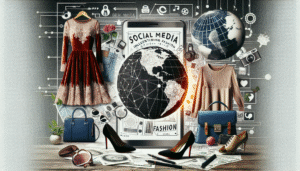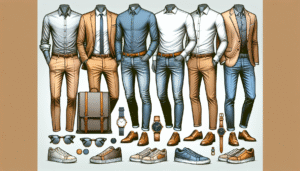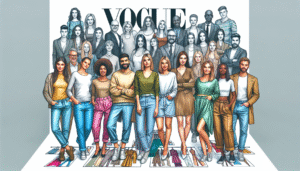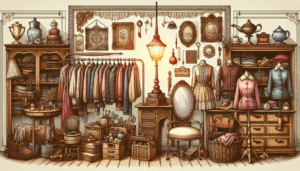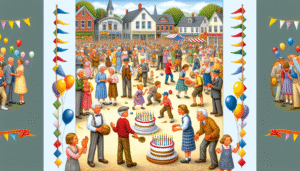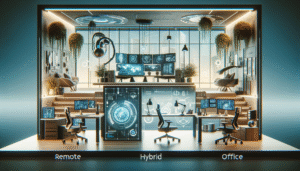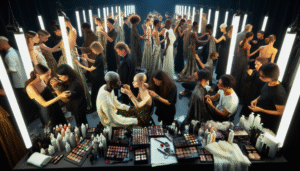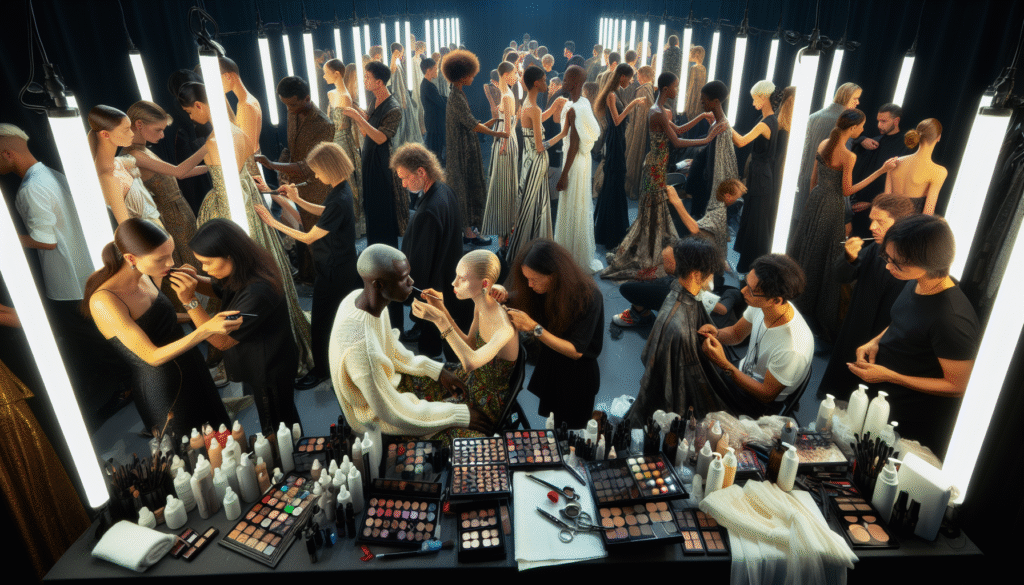
The Choreography of Chaos: Behind the Scenes of a Fashion Show
From Concept to Catwalk: The Genesis of a Collection
Months before the flash of cameras and the rustle of fabrics on the runway, the journey of a fashion show begins with a single seed: the designer’s vision. This initial concept, often inspired by art, culture, or personal experiences, dictates the collection’s theme, color palette, and overall aesthetic. Mood boards, brimming with fabric swatches, sketches, and inspirational imagery, become the blueprint for the creative team. Designers meticulously select fabrics, considering texture, drape, and movement, while pattern makers translate sketches into tangible garments. This is a period of intense collaboration, where the designer’s vision takes shape through the skilled hands of seamstresses, embroiderers, and other artisans. Prototypes are created, fitted, and adjusted, with each stitch contributing to the final narrative.
Casting Call: The Search for the Perfect Faces
Parallel to the garment construction, the casting process begins. Casting directors work closely with the designer to select models who embody the collection’s spirit. Height, walk, and overall presence are key considerations, but the casting process also seeks a diverse representation of beauty, reflecting the evolving landscape of the fashion industry. Model agencies submit portfolios, and potential candidates attend castings, where they walk for the casting team and are assessed based on their fit and compatibility with the collection’s aesthetic. The chosen models play a crucial role in bringing the designer’s vision to life, embodying the clothes and conveying the desired mood on the runway.
The Pre-Show Hustle: Fittings, Rehearsals, and Backstage Buzz
As the show date approaches, the pace intensifies. Garments undergo final fittings, ensuring a perfect fit on each model. Stylists meticulously plan each look, selecting accessories, shoes, and hairstyles that complement the garments and contribute to the overall narrative. Makeup artists experiment with looks that enhance the collection’s theme, creating a cohesive aesthetic that ties the show together. The backstage area transforms into a hive of activity, with dressers, hair stylists, makeup artists, and production assistants working in synchronized chaos. Models rehearse their walks, navigating the runway layout under the watchful eye of the show director. Music is selected, lighting cues are finalized, and the choreography of the show takes shape.
Lights, Camera, Fashion: The Runway Unveiling
On the day of the show, the energy is palpable. Backstage, the atmosphere is a mix of nervous excitement and focused preparation. Dressers steam garments, ensuring they are pristine and wrinkle-free. Makeup artists apply finishing touches, while hairstylists perfect elaborate updos and sleek ponytails. Models receive final instructions, ensuring they understand the pacing and choreography of the show. As the lights dim and the music begins, the backstage frenzy reaches its peak. Dressers make last-minute adjustments, ensuring each model is ready for their moment in the spotlight. Then, one by one, the models step onto the runway, embodying the culmination of months of hard work and creative collaboration.
The Unsung Heroes: Production, PR, and the Power of Teamwork
Beyond the glamour of the runway, a dedicated team works tirelessly to ensure the show’s success. Production managers oversee logistics, coordinating everything from seating arrangements to backstage access. Public relations teams manage guest lists, liaise with media, and ensure the show generates positive press coverage. Photographers and videographers capture every detail, documenting the collection for posterity and disseminating images across various media platforms. The seamless execution of a fashion show is a testament to the power of teamwork, with each individual contributing their expertise to create a memorable and impactful event.
The Digital Age: Live Streaming and Social Media Amplification
In today’s digital landscape, fashion shows extend far beyond the physical runway. Live streaming has become an integral part of the experience, allowing audiences worldwide to witness the collection’s unveiling in real-time. Social media platforms buzz with commentary, amplifying the show’s reach and generating global conversations. Influencers and fashion bloggers share their perspectives, further disseminating the designer’s message and contributing to the collection’s overall impact. The digital age has democratized fashion, making it more accessible and engaging than ever before.
Sustainability and Ethical Considerations: A Shifting Landscape
The fashion industry is increasingly focused on sustainability and ethical practices. Designers are incorporating eco-friendly materials and production methods, minimizing their environmental footprint. Ethical sourcing and fair labor practices are becoming increasingly important, with consumers demanding transparency and accountability. The backstage area of a fashion show is also reflecting this shift, with a greater emphasis on reducing waste and promoting responsible consumption.
The Afterglow: Post-Show Wrap-Up and Future Collections
Once the final walk concludes and the applause fades, the backstage crew springs into action, packing up garments, dismantling sets, and restoring order. The designer, often overwhelmed with relief and gratitude, takes a moment to reflect on the culmination of months of dedication and hard work. The post-show period is also a time for reflection and analysis, with the team assessing the show’s success and identifying areas for improvement. The fashion cycle continues, with the designer already looking ahead to the next collection, the next inspiration, and the next opportunity to transform their vision into reality.







